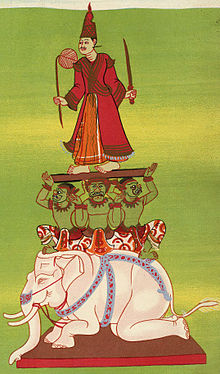
The nats are god-like spirits venerated in Myanmar and neighbouring countries in conjunction with Buddhism. They are divided between the 37 Great Nats who were given that status by King Anawrahta when he formalized the official list of nats. Most of the 37 Great Nats were human beings who met violent deaths.

Mount Popa is a dormant volcano 1518 metres (4981 feet) above sea level, and located in central Myanmar in the region of Mandalay about 50 km (31 mi) southeast of Bagan (Pagan) in the Pegu Range. It can be seen from the Ayeyarwady (Irrawaddy) River as far away as 60 km (37 mi) in clear weather. Mount Popa is a pilgrimage site, with numerous Nat temples and relic sites atop the mountain.
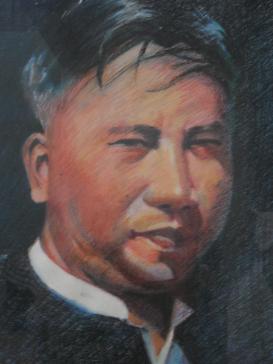
Ludu U Hla was a Burmese journalist, publisher, chronicler, folklorist and social reformer whose prolific writings include a considerable number of path-breaking non-fiction works. He was married to fellow writer and journalist Ludu Daw Amar.

Alaungsithu or Sithu I was king of Pagan Dynasty of Burma (Myanmar) from 1112/13 to 1167. Sithu's reign was a prosperous one in which Pagan was an integral part of in-land and maritime trading networks. Sithu engaged in a massive building campaign throughout the kingdom, which included colonies, forts and outposts at strategic locations to strengthen the frontiers, ordination halls and pagodas for the support of religion, as well as reservoirs, dams and other land improvements to assist the farmers. He also introduced standardized weights and measures throughout the country to assist administration as well as trade. He presided over the beginning of a transition away from the Mon culture toward the expression of a distinctive Burman style.
Tagaung is a town in Thabeikkyin Township, Mandalay Region, Myanmar. It is situated on the east bank of the Ayeyarwady River, 127 miles north of Mandalay.
Naratheinkha was king of Pagan dynasty of Burma (Myanmar) from 1171 to 1174. He appointed his brother Narapati Sithu heir apparent and commander-in-chief. It was the first recorded instance in the history of the dynasty that the king had given up the command of the army. The king was assassinated by Aungzwa, one of Sithu's servants, after the king had raised one of Sithu's wives to queen.
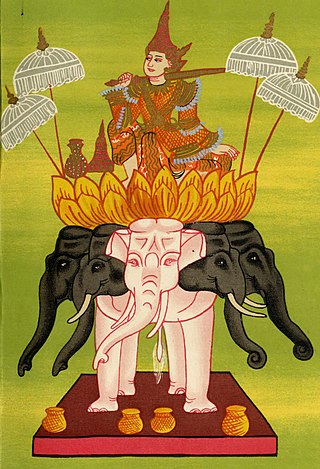
Kyawswa I of Pinya was king of Pinya from 1344 to 1350. His six-year reign briefly restored unity in southern Upper Burma although his authority over his southernmost vassals remained largely nominal. He suddenly died in 1350, and came to be regarded as one of the major Burmese folk spirits, known as Nga-zi Shin Nat.
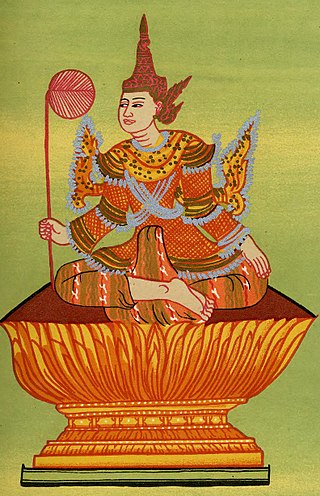
Tarabya was king of Ava for about seven months in 1400. He was the heir apparent from 1385 to 1400 during his father King Swa Saw Ke's reign. He was a senior commander in Ava's first three campaigns (1385−91) against Hanthawaddy Pegu in the Forty Years' War. He was assassinated seven months into his rule by his one-time tutor, Gov. Thihapate of Tagaung. The court executed the usurper, and gave the throne to Tarabya's half-brother Min Swe.

Hnamadawgyi is one of the 37 nats in the Burmese pantheon of nats. She is the nat representation of Myat Hla, sister of Maung Tint De. According to tradition, she was a queen of the King of Tagaung. When she saw her brother Tintde being burned alive, she leapt into the fire, but only managed to save his head. She died of her burns and became a nat. She is portrayed standing on a dais upon a black elephant, her right hand on her chest with a plum between her thumb and index finger, and her left hand by her side. She is also known for having a monkey companion, Shwe Min Wun.
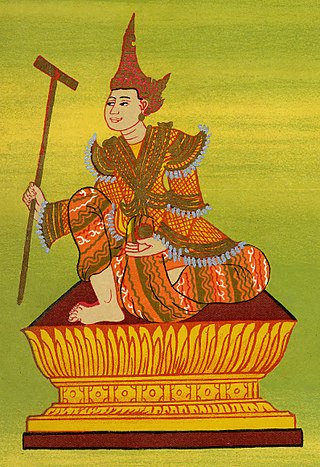
Shwe Nawrahta is one of the 37 nats in the Burmese pantheon of nats. He is the merged personalities of two historic Nawrahtas. The first source is Anawrahta of Launggyet, son in law of King Minkhaung I of Ava. Anawrahta was appointed governor of Arakan in 1406, and later married to the king's daughter Saw Pyei Chantha. In April 1408, Razadarit's Hanthawaddy troops captured Launggyet, and took Anawrahta and Saw Pyei Chantha prisoner to Pathein. On arrival, Anawrahta was executed, and his wife passed into Razadarit's harem as a full queen. The second source is Nawrahta of Yamethin, grandson of King Minkhaung II of Ava and the eldest son of King Thihathura. In November 1501, he ordered his servant Nga Thaukkya to assassinate the new king Shwenankyawshin. Thaukkya's attempt failed; he was caught and put to death. Nawrahta lived in the palace so he was easily caught; being of royal blood, he was drowned.

Shwe Hpyin Naungdaw, also called Shwe Hpyin Gyi or Min Gyi, is one of the 37 nats in the official pantheon of Burmese nats. He is the elder brother of Shwe Hpyin Nyidaw and the son of Popa Medaw, another nat. Worshippers of this nat avoid consumption of pork, as Shwe Hpyin Gyi's father, Byatta, is believed to have been an Indian Muslim.

Shwe Hpyin Nyidaw, also called Shwe Hpyin Nge or Min Lay, is one of the 37 nats in the official pantheon of Burmese nats.

Taungmagyi (Burmese: တောင်မကြီး, lit. 'Lord of the South', also known as Shin Nyo is one of 37 nats in the official Burmese pantheon of nats. He is one of two sons of Maung Tint De and Shwe Nabay. The King he and his brother were serving under became fearful of their strength and forced them to fight each other to death.
Khin Maung Toe was a Burmese singer songwriter, and was the longtime lead singer of the Medium Wave (မဇ္ဈိမလှိုင်း) band. He was one of the few successful Burmese singer-songwriters who wrote his own original songs. He released 35 albums in his career. He is best known for his 1984 hit "Maha Hsan Thu" (မဟာဆန်သူ).

Popa Medaw is a nat of Myanmar. She is a flower-eating yakshini and the mother of the Shwe Hpyin brothers Shwe Hpyin Naungdaw and Shwe Hpyin Nyidaw. Although not an official member of the 37 nat pantheon which is based on her domain and namesake of Mount Popa, she is seen as an important nat in the Burmese spirit world. Popa Medaw is also called Mei Wunna.
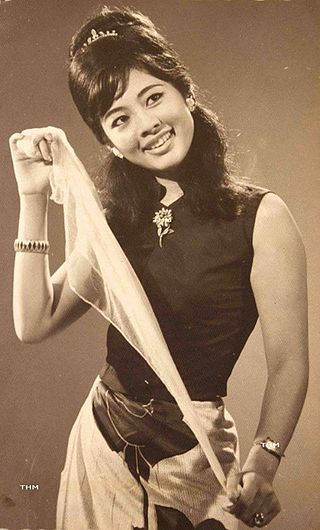
Khin Than Nu is a Myanmar Motion Picture Academy Awards-winning Burmese actress, winning Best Actress in 1967, 1990 and 2000. In Myanmar, Khin Than Nu is recognized as the most beautiful actress of all time.

The Myanmar Motion Picture Academy Awards are presented annually to honour both artistic and technical excellence of professionals in the Burmese Film Industry of Myanmar. The awards ceremony has been held annually since 1952. Each winner is presented with a golden statue and in recent years also a cash prize.
Soe Myat Thuzar is a three-times Myanmar Academy awarded Burmese actress and writer. She is best known for acting in many Burmese films.
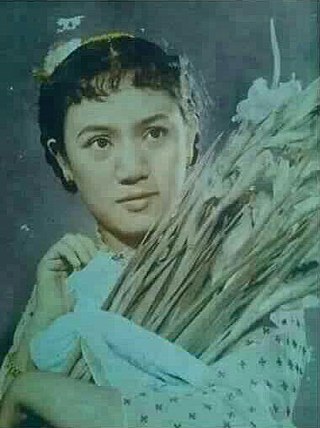
May Thit was a Burmese actress and singer. She won Best Actress Award for 1960, Best Supporting Actress Award for 1964 and 1976 in Myanmar Motion Picture Academy Awards. She was famous around between 1950s and 1990s.
